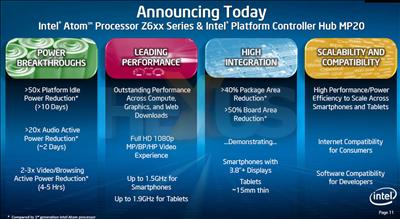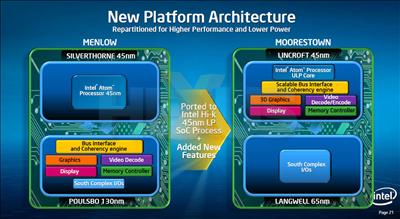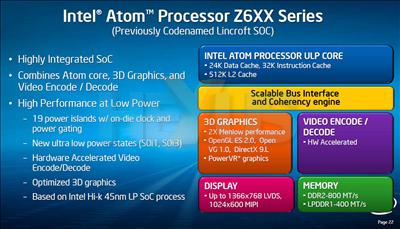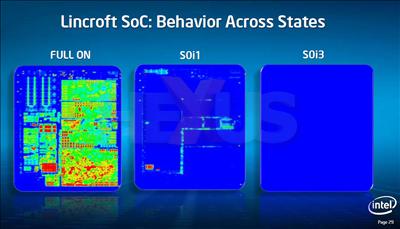Intel developments
Opinion is divided on Intel's entry into the smartphone chip market. We've read some assessments that laud Intel's achievement and think it's just a matter of time until we're using Intel phones, while others point out that the ARM ecosystem will have evolved considerably by the time Intel-based smartphone begin to appear next year.
What is clear is that Intel, which is bigger than any single company making ARM-based smartphone chips, is fully committed to this venture and won't be going away anytime soon. To give you more of an idea how Intel is going about adapting its micro-architecture to the smartphone market, here are a few slides from its presentation that refer to the crucial bit - power efficiency.
Here's Intel's summary of what Moorestown brings to the table.
One of the major changes from the original Atom platform was the integrating a lot more of the silicon - especially graphics processing - into the CPU, which is now called Lincroft.
As a result, these other cores moved from being made on a 130 nm process to a 45 nm one. This generates advantages for both performance and power-use.
Meanwhile the controller hub - codenamed Langwell - moves to a 65 nm process and offers things like a 5 MP image sensor.
Intel has created two idle states for Lincroft as well as power management software and Burst Performance technology designed to move Lincroft from idle to maximum performance and back as quickly as possible. This last slide shows infra-red images of Lincroft in its three different power states.


















